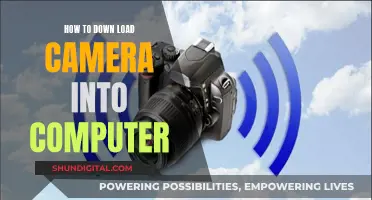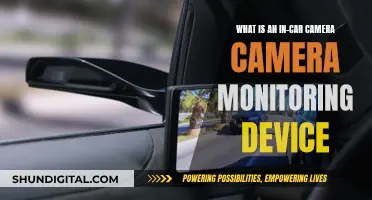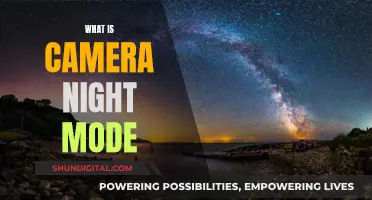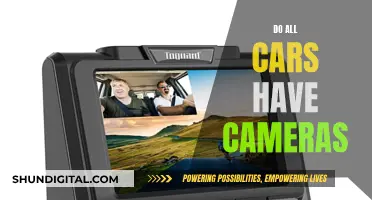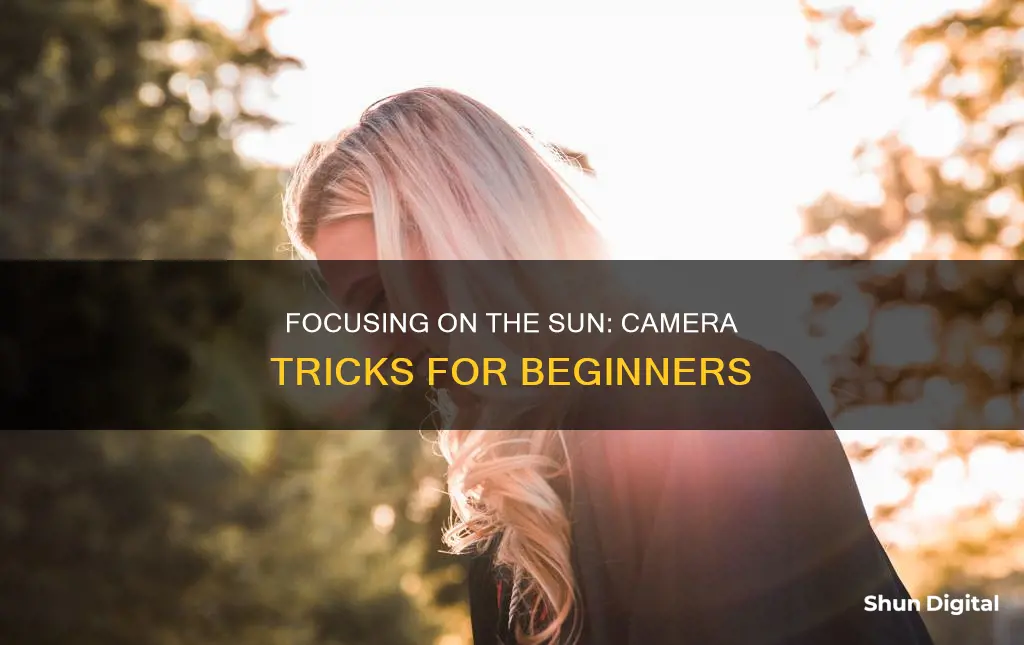
Focusing a camera at the sun can be challenging due to its extreme brightness and constant emissions of damaging ultraviolet and infrared radiation. However, with the right equipment and precautions, it is possible to capture stunning images of our closest star. Here are some essential tips on how to focus your camera at the sun:
- Use a Solar Filter: The intense sunlight can damage your camera and your eyes. A high-quality solar filter is essential to reduce the light entering your camera and protect your eyes. Never use scratched or damaged filters, and always inspect your filter before use.
- Camera Settings: Set your camera to manual mode with a low ISO (100-200), a fast shutter speed (1/320 or faster), and an aperture of f/5.6 or higher. Use spot metering to ensure proper exposure, and focus on the edge of the sun or sunspots for sharper images.
- Stabilization: Use a tripod to stabilize your camera, especially when using longer telephoto lenses. This will help reduce vibrations and improve image sharpness.
- Telephoto Lenses: A telephoto lens with a focal length of at least 400mm will allow you to capture more detailed images of the sun and any sunspots. Vintage lenses with great optics can also be a cost-effective option.
- Focus and Patience: Spend time adjusting the focus until you achieve the sharpest image possible. The steadiness of the air can cause the sun's edge to ripple, so be patient and take multiple shots. Early mornings often provide the best seeing conditions.
- Post-Processing: Software like Photoshop, PaintShop Pro, or GIMP can enhance your images and bring out more detail. Process your RAW or TIFF files to retain the highest image quality.
Remember, always prioritize eye safety when photographing the sun. Do not look directly at the sun without proper eye protection, and never point your camera at the sun without a certified solar filter. With the right techniques and precautions, you can capture incredible images of the sun and its dynamic surface.
| Characteristics | Values |
|---|---|
| Camera type | Digital or video cameras |
| Camera equipment | Solar viewing glasses, tripod, remote shutter release, solar filter |
| Camera settings | Shutter speed, aperture, ISO |
| Time of day | Sunrise and sunset |
| Sun characteristics | Extreme brightness, emits damaging ultraviolet and infrared radiation |
What You'll Learn

Use a solar filter to protect your camera and eyes
To protect your eyes and camera when photographing the sun, it is essential to use a solar filter. Solar filters are designed to protect your eyes and equipment from the sun's intense rays and non-visible IR and UV radiation.
There are several options available for solar filters:
- Filter sheet: This type of filter is placed over the front of your camera lens and can be secured with tether holes.
- Screw-on front filter: These filters screw directly onto your camera lens, similar to a standard lens filter.
- Solar filter that mounts between the camera and lens: This type of filter is used with interchangeable lens setups.
When choosing a solar filter, it is important to select one that is properly designated for solar viewing and photography. While some neutral density (ND) filters may be marketed for solar photography, it is recommended to use a solar filter to ensure adequate protection for your eyes and equipment.
Additionally, pay attention to the fine print on the packaging of your solar filter. Some filters are intended for use with electronic viewfinders or LCD screens only and should not be used with optical viewfinders.
It is also crucial to ensure that the filter is securely attached to your camera to avoid accidental removal during photography.
By following these guidelines and using the appropriate solar filter, you can safely protect your camera and eyes while capturing stunning images of the sun.
Do Red-Light Cameras Affect Insurance in Washington State?
You may want to see also

Avoid pointing your camera at the midday sun
The midday sun is extremely bright and constantly emits damaging ultraviolet and infrared radiation. Therefore, it is a notoriously poor photographic target.
As a rule of thumb, it is usually better not to point your camera at the midday sun. The lens of your camera can act like a magnifying glass and focus the sun's rays onto a very small area on the shutter, burning a hole in the shutter or aperture mechanism of the lens itself.
In addition, with digital or video cameras that use electronic sensors, the direct sun can sometimes cause "blooming" problems where the sensor is overloaded and won't record properly afterward. In newer cameras, this is only temporary, but in some older cameras, it can cause permanent damage.
If you must point your camera at the sun, use a certified solar filter and avoid using the optical viewfinder.
Cameras of 1912: A Historical Snapshot
You may want to see also

Use a tripod to stabilise your camera
Using a tripod is a great way to stabilise your camera when taking photos of the sun. Here are some tips to help you get the most out of your tripod and improve the sharpness of your images:
- Check your tripod's payload: Ensure that your tripod can support the weight of your camera equipment. Check the maximum weight capacity of both the tripod legs and head, and make sure your equipment doesn't exceed this limit.
- Rubber spikes: Tripods often have small rubber feet, and sometimes these can be removed to reveal small spikes. Use the spikes when shooting on softer surfaces like grass, as they provide better grip than the rubber feet.
- Extend the legs in the right order: Start by extending the thickest, uppermost sections of the legs first. Only extend the thinner sections if you need more height.
- Centre column: Only extend the centre column after you've extended all the leg sections. Extending the centre column will compromise stability, so only do this if absolutely necessary.
- Don't overtighten: Avoid overtightening the screw locks on your tripod. Provide a firm grip, but don't screw anything too tightly as this can cause damage.
- Use the hook: Many tripods have a small hook on the underside of the centre column. Use this to hang a bag or weight for extra stability, especially in windy conditions or when there are vibrations nearby.
- Mount telephoto lenses using the collar: If you're using a longer and heavier lens, mount the camera and lens combination using the lens collar. This will help balance the weight and reduce the chance of movement during the exposure.
- Turn off image stabilisation: When using a tripod, turn off the image stabilisation system on your camera or lens. These systems can sometimes detect vibrations and attempt to correct them, creating a loop of vibration and correction that can affect sharpness.
By following these tips, you'll be able to get the most out of your tripod and improve the stability of your camera when photographing the sun.
Memphis Camera Tickets: What You Need to Pay
You may want to see also

Use a remote shutter release to reduce vibrations
When taking a photo of the sun, using a remote shutter release is a great way to reduce vibrations and get a sharper image. Here's how you can use this technique effectively:
Benefits of a Remote Shutter Release
- Avoid Camera Shake: When you press the shutter button on your camera, you can introduce camera shake, which leads to blurry photos, especially when using slow shutter speeds. With a remote shutter release, you can trigger the shutter without touching the camera, minimising vibrations and resulting in sharper images.
- Remote Triggering: A remote shutter release allows you to trigger the shutter from a distance, which is convenient for various types of photography, such as self-portraits, wildlife photography, and long-exposure shots.
Choosing the Right Remote Shutter Release
Remote shutter releases come in different forms, such as wired (cable releases) and wireless options. Consider your needs before choosing one:
- Wired Remote Shutter Releases: These are often more affordable and offer many of the same benefits as wireless releases. They connect physically to your camera via a cable.
- Wireless Remote Shutter Releases: These offer the advantage of being able to stand far away from the camera and take pictures. They are typically easy to operate and can handle various weather conditions. Some even have advanced features like interval timers for time-lapse photography.
Tips for Using a Remote Shutter Release
- Stability: Always use a sturdy tripod to keep your camera stable, especially when using long focal lengths.
- Live View or Mirror Lock-up: When using a DSLR, consider activating the mirror lock-up feature or shooting in Live View mode to further reduce vibrations caused by the mirror movement.
- Electronic Shutter: Enable your camera's electronic shutter or electronic front-curtain shutter to minimise vibrations from the mechanical shutter.
- Focus and Composition: Use the Live View function to frame and focus your shot accurately. This is safer than using the viewfinder when photographing the sun.
- Interval Timers: If you plan to do time-lapse or star trail photography, look for remote releases with intervalometer functionality, allowing you to capture a series of shots at specified intervals.
- Battery Backup: Remote releases require batteries, so always carry spare batteries to avoid running out of power during a photoshoot.
Using a remote shutter release is an excellent way to improve your solar photography by minimising vibrations and giving you more flexibility in capturing the perfect shot. Remember to follow safety guidelines when photographing the sun, including the use of solar viewing glasses and certified solar filters for your camera.
Panorama Mode: Capturing Wide-Angle Views with Your Camera
You may want to see also

Use a solar finder to frame the sun
Using a solar finder is a safe and accurate way to frame the sun when trying to focus your camera on it. A solar finder is a device that helps you centre the sun in your field of view without damaging your eyes or equipment.
There are two basic ways to build a solar finder, and both use the sun as part of the system: by casting a shadow onto a target or by casting a beam of light on a target. Here are some tips on how to build and use a solar finder:
Building a Solar Finder
- Use a length of plastic or aluminium tube, about 150mm long and 25-32mm in diameter.
- Cap one end and drill a small hole (1/16 to 1/8 inch) in the middle of the cap.
- Stretch a section of white plastic or tape across the uncapped end.
- When aimed at the sun, a bright spot of light will shine on the white target.
- You can also cut a viewing slot in the side of the tube so you can see the target from above, eliminating the need to bend down.
- Alternatively, use the detergent jug spout method or the Helio Pod Model described below.
Using a Solar Finder with Your Camera
- Set up your solar-filtered telescope or camera.
- Put a black dot in the centre of the bright spot on your target with a felt marker.
- Adjust the angle of your telescope or camera until the sun is centred on the black dot.
- If using a Helio Pod Model, use the disk without a crosshair, and adjust the angle of your telescope or camera until the spot is centred on the crosshairs.
Remember, never look directly at the sun or through equipment not designed for safe solar viewing, as this can cause irreversible damage to your eyes.
Camera Battery Explosions: How Common Are They?
You may want to see also
Frequently asked questions
It's not recommended. The sun's extreme brightness and constant emissions of damaging ultraviolet and infrared radiation can cause serious damage to your camera.
The lens of the camera can act like a magnifying glass and focus the sun's rays onto a very small area on the shutter, burning a hole in the shutter or aperture mechanism. In digital or video cameras that use electronic sensors, the sun can cause "blooming" problems, where the sensor is overloaded and won't record properly afterward.
Use a solar filter. This will reduce the light entering your camera's optics to a fraction of the total radiation, allowing safe solar observation.
Always wear certified solar viewing glasses to protect your eyes. Never look at the sun with your naked eyes as permanent damage to your eyesight may result.
Set your camera to manual mode with a low native ISO (100 or 200), a fast shutter speed (1/320th of a second is a good starting point), and adjust your aperture to control exposure.


